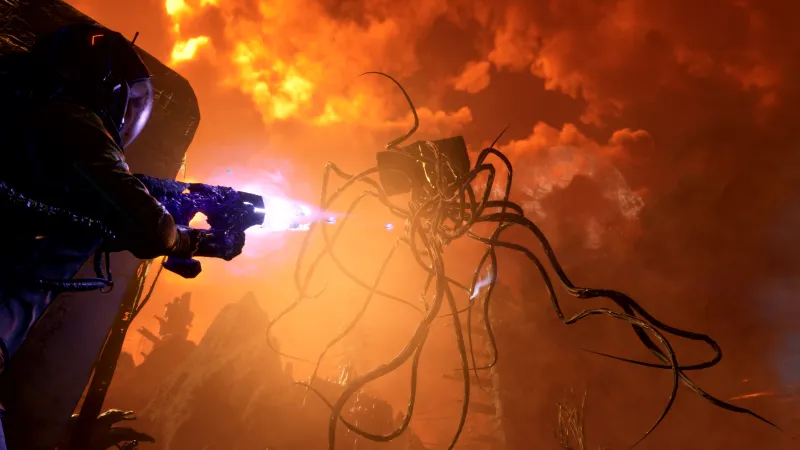
While a few cryptic early videos have teased the atmosphere and visual potential of Returnal, Housemarque’s new game has remained largely a mystery since its announcement. But after a recent hands-off demo I had the chance to check out, and its appearance at today’s State of Play event, my anticipation for the project skyrocketed.
An action game like Returnal lives or dies by how tight the controller play feels, and of course, that’s one element that I can’t speak to with authority until I get hands-on. As such, I’m not ready yet to crown the game as my new shooter obsession until I play it in full on PlayStation 5 for the April 30 release. But independent of gameplay feel, Returnal has a lot in its favor as it nears release in a couple of months.
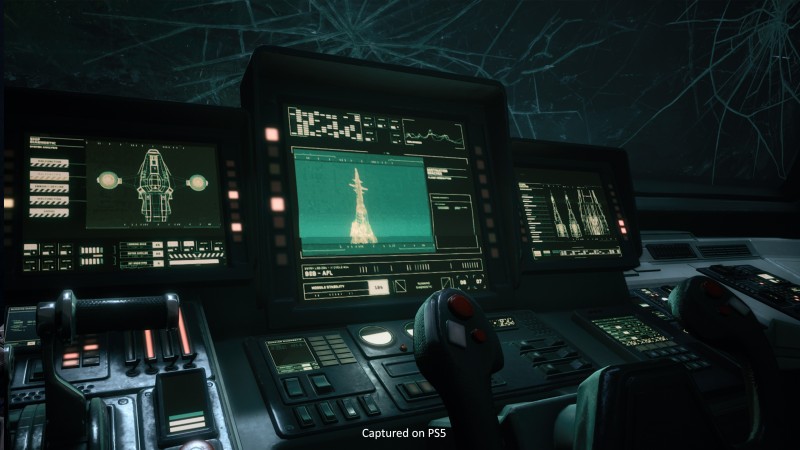
The Expertise of Housemarque
Housemarque has been around for a long time, and the team has the experience and talent to nail top-tier action. Not everyone knows the team’s games, because in recent game generations, they’ve focused primarily on downloadable arcade-style action games, including titles like Resogun, Nex Machina, and Alienation. Those were fast-paced games that didn’t immediately reveal their depth, but any player who dug in found a rich well of complexity and immense replayability, thanks to immaculate balancing, very tight action controls, and a steady ramp of challenge that allowed for constant improvement by players.
Returnal shifts perspectives to a third-person action shooter, but early gameplay exhibits many of the same focal points of replayability and smooth, fast moving action. And that bodes very well for the chance at some engaging combat scenarios.
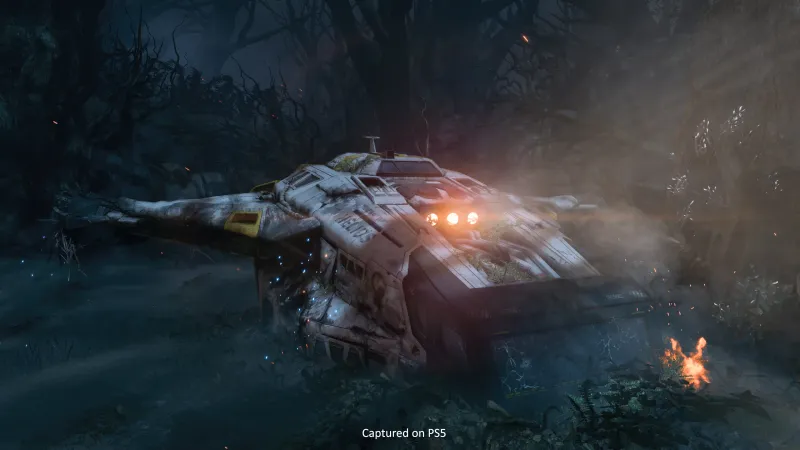
Roguelike Structure
Returnal explores the conceit of an astronaut named Selene who crash lands on a weird alien planet called Atropos, filled with monstrous creatures. As she explores, her limited knowledge and weaponry inevitably lead to death. But after meeting her demise, she inevitably wakes back up on her crashing spaceship, destined to experience a madness-inducing time loop.
From a gameplay perspective, that means that Returnal follows the familiar structure of a roguelike, albeit with some twists. Selene can acquire new powers and avenues for exploration that permanently unlock, including a melee attack, a hook shot, and even changes to the geography of the world, like a bridge or door that opens up for subsequent runs. Meanwhile, other upgrades can be acquired on each run, but disappear afterward, like weapons and mods, max health, and attack power.
As such, there’s the promise that players can gradually unlock entirely new areas and biomes, as well as core powers, but also expect that each run brings a sense of discovery and newness.

Procedural Generation
Content that is randomly created for each run can be a blessing or a curse in roguelikes, but based on my time observing the game in action, the team has zeroed in on a number of systems that make the most of both hand-crafted, curated content, while simultaneously having it presented in creative ways on each runthrough.
Amid 10 weapon archetypes, like machine guns and shotguns, there is a tremendous variance that changes the baseline behaviors of armaments you find. In addition, weapons come with traits that further change things up, like piercing bullets, sniper rifle rounds, or explosive rounds – all of which can stack. On top of that, weapons also come with unique alt-fire options, like adding a lightning gun shot, or tentacle attacks that entangle foes. Add in randomized specs, and players can expect all kinds of weird and wonderful weapons. On top of weapons, players also encounter parasites, which graft onto Selene, and offer a random selection of both positive and negative effects, leading to a risk/reward choice for using them. For instance, you might bear one parasite that attracts revenge bullets from enemies you kill, but simultaneously creates explosions every time you pull off a critical reload.
Likewise, the level design is built to optimize for variability while not ignoring the need for thoughtful construction and progression. Individual rooms are hand-crafted, but their orientation with other rooms changes. And the contents of the rooms also changes, from the monsters that appear there, to the secret chambers or passages you can find, to the loot you can pick up. On a larger level, Returnal also features several unique biomes that you’ll gradually encounter– with entirely new color palettes, environmental effects, and geography to explore.
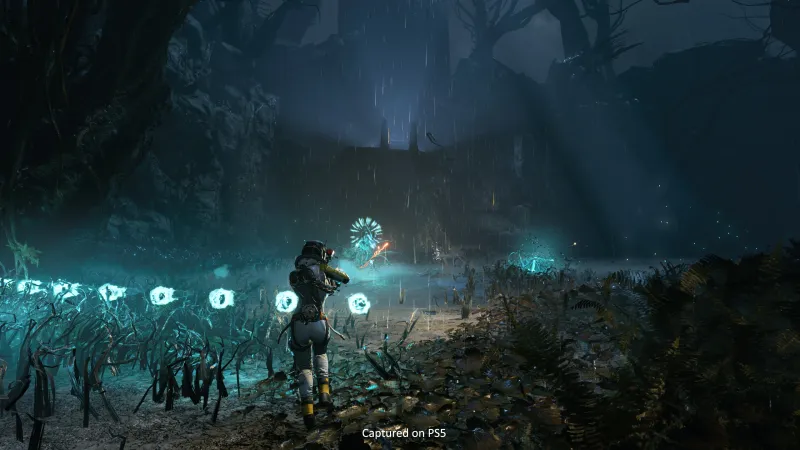
A Mysterious Story
While the shooting and action is certainly a big focus, Returnal also has some big narrative ambitions. Selene’s exploration of the Atropos planet is wrapped up in mystery and secrets, including the very nature of the time loop itself, and why it’s happening. At times, Selene encounters manifestations of her own dead self, sometimes arising from previous lives she has lived exploring the planet, but also sometimes encountering dead selves from future runs she hasn’t yet taken.
Players learn that a strange signal drew Selene to Atropos, labeled “White Shadow,” and she desperately searches for its origin and meaning.
But strangest of all, during Selene’s journey, she occasionally encounters what seems to be an Earth house hidden amid the alien growth – a place that clearly has some ties to her own past. When players approach the house, the view shifts to first-person, and Selene can wander the house, though there are doors she won’t initially open, seemingly because of some trauma connected to her time there.
The storyline is built to unfold gradually over the course of many runs and lives through the game, which has the potential to lend a linking nature between the many playthroughs that players may inevitably confront on the journey to answers.
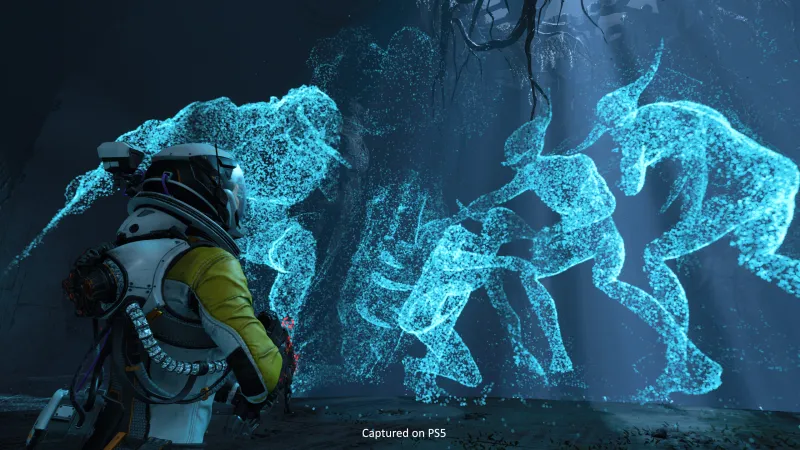
Sweet PS5 Exclusive Action
While there are plenty of fascinating trappings that add intrigue and replayability to Returnal’s appeal, it will all be for naught if the shooting, speed, and overall action aren’t up to snuff. The full picture there won’t come into focus until I’ve had a chance to play it for myself, but the combat I saw in the hands-off demo looks very promising.
In keeping with Housemarque’s arcade history, many of the battles draw heavily on the “bullet-hell” tradition of constant attacks pouring out across the screen, demanding the player dodge, run, and dash to safety, even while pumping out counterattacks. There’s a twitchy, fast-moving quality to the action that is sure to remind players of the team’s other work on titles like Resogun.
Beyond that, the quality of the action is especially high, thanks to the game’s exclusive appearance on PS5. One of a handful of games so far that have been exclusively built to cater to the PS5’s potential, the onscreen visuals (and especially particle and weapon effects) are a sight to behold. Housemarque told me that their team is also investing heavily in leveraging the PS5’s 3D audio tech to create increased atmospheric immersion; plan to play with a headset if you can. In addition, the team is also exploring ways to capitalize on the PS5’s awesome DualSense controller; for instance, the adaptive trigger feature will be used on the L2 aim button, letting you get a focused zoom by pulling the trigger halfway, but also letting you push past the resistance so that the weapon will switch into alt-fire.
We don’t have long to wait until we can all try out Returnal for ourselves. The game is targeting a full release on April 30, exclusively for PlayStation 5. In the meantime, if the idea of Housemarque’s great eye for action has you excited, the team’s earlier games, including Resogun, remain as fun now as on the day they released – go check them out!
Click here to watch embedded media
Source: Game Informer Five Reasons To Be Excited About Returnal

